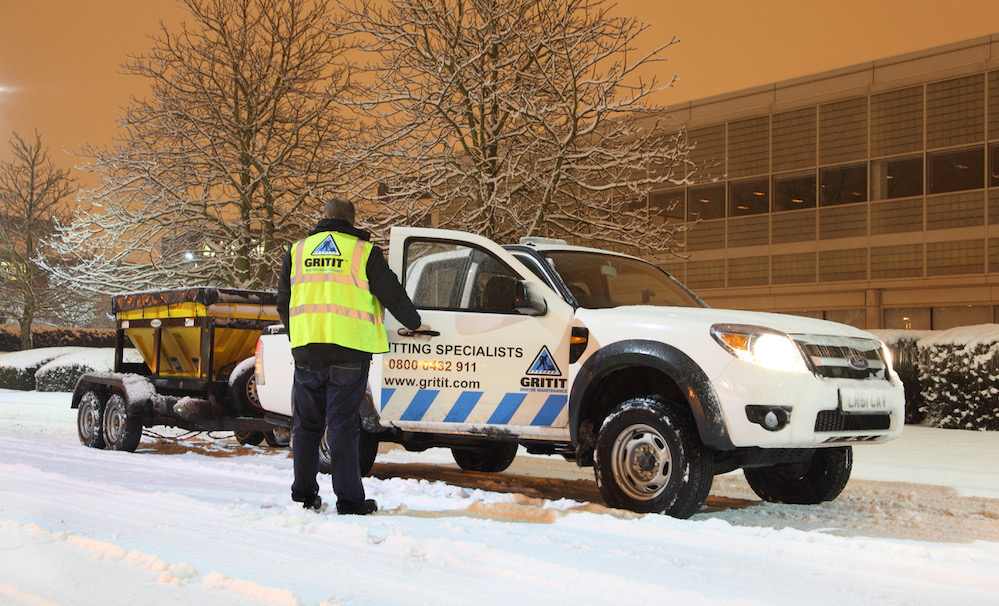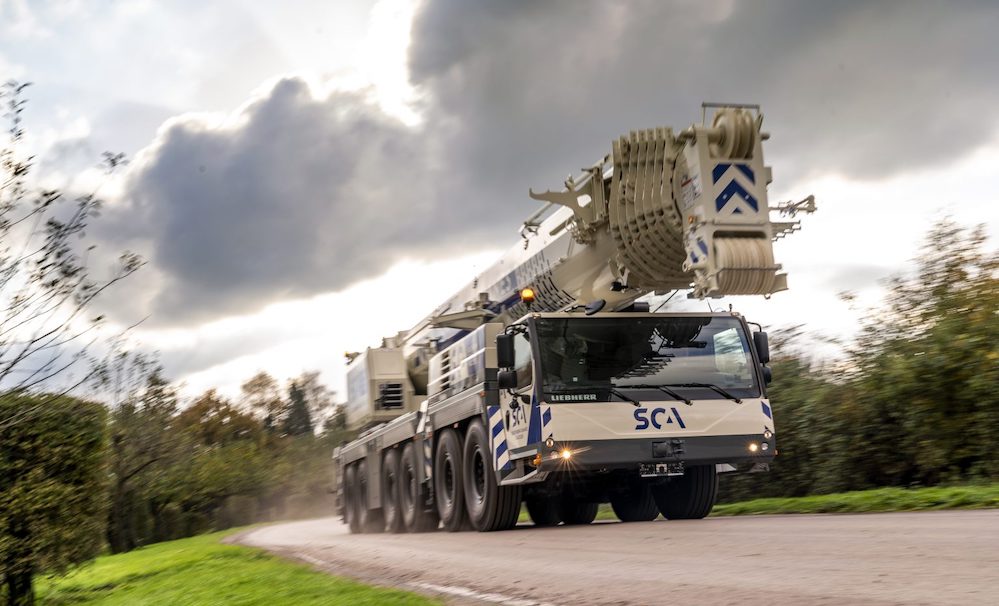Forecasters are already predicting that temperatures this winter could drop below the seasonal averages. This, compounded by the extreme and somewhat unpredictable past winter, serves as a chilling reminder to the transport and logistics industry of their responsibility to protect people from the risks of slips and falls in icy conditions.
As we look ahead to this seasonal change, protecting employees and other visitors from the risks of slips and falls in icy conditions is an incredibly serious responsibility for transport and site managers. The daily risks involved in operating transport depots and warehouse facilities are exacerbated once ice and snow are added to the mix.
According to the Health and Safety Executive (HSE) reports show that around five million days are lost each year through workplace injuries, with slips, trips and falls making up more than half of all reported major/specified injuries and almost 29 per cent over-seven-day injuries. This costs the UK economy billions of pounds.
Adequate time must be spent to anticipating and planning well ahead of the high-risk seasons. This might seem obvious, yet astonishingly in BIFM research* indicates that almost a quarter of facilities managers said that they don’t have a winter maintenance plan in place – and of those that do, 26 per cent fail to review it annually.
Across the board, it is clear that those responsible for winter maintenance can and should do more – and there is no time like the present to start preparing your winter maintenance plans. Ultimately winter maintenance should actually be an all-year-round job: Late spring and early summer are actually the ideal times to review your winter maintenance plan using up-to date information, and drawing on experience from the previous winter whilst it is still fresh, to resolve any issues, explore new initiatives and allocate budget to improve the plan going forward for the coming winter.
Meeting your Duty of Care and avoiding liabilities
So how ready should your organisation be? The Health and Safety at Work Act 1974 states that an employer has a Duty of Care to ensure, so far as is reasonably practicable, the health, safety and welfare at work of all employees, including the provision of a safe working environment. This Duty of Care also extends beyond staff to anyone visiting, or passing by a site, including suppliers and members of the public.
As a result every organisation must be able to demonstrate that they have done everything reasonably possible to meet their Duty of Care. Any plan has to ensure compliance with all health and safety legislation and that effective steps have been taken to make sites safe for staff and customers during harsh winter weather.
Clearly, this is more than an administrative matter: Failing to get things right can have a major effect on any individuals that come to harm and also to an organisation’s reputation and its finances. There is also the risk of legal action.
Over the past few years there has been an increase in litigation with ‘slipping on ice’ accidents having the potential for the most high value claims and compensation. According to the Hospital Episode Statistics for England, over 7,000 people were treated in hospital after slipping on snow or ice during the harsh winter weather of 2012/13. The less severe winter of 2014/15 still recorded 2919 falls that required a hospital visit. A proactive winter maintenance plan can help companies mitigate potential liability claims.
A winter maintenance plan
A proactive and fully managed approach to winter maintenance can help prevent accidents and mitigate potential liability claims. Ultimately, this comes down to having a robust winter maintenance plan that is embedded into an organisation’s health and safety policy. By doing so, it is possible to meet your Duty of Care, achieve compliance, manage risk, and meet insurers’ expectations. Furthermore, when the bad weather does arrive, acting on the basis of a clear plan can be key to ensuring business continuity.
Your adverse weather policy should clearly communicate how your organisation will manage/take action in extreme weather situations. Key aspects of any effective plan include:
- Use of a recognised health and safety management system such as OHSAS1800115 to ensure the plan is fit for purpose.
- Clearly defined and communicated responsibilities – both on the ground and with a senior ‘champion’ to ensure high level management buy-in.
- A process for documenting the proactive actions, incidents and investigations undertaken with records maintained and kept for a minimum of three years.
- Ensuring the plan is based on detailed surveys to identify hazard areas and that action is undertaken according to real time accurate weather data and agreed action triggers for service.
- Adequate resourcing with either professional contractors or a dedicated trained in-house team, sufficient and well-maintained PPE.
- Clearly defined KPIs to measure performance against and a process to review the plan and any KPIs on a regular basis (at least bi-annually)
Don’t leave it late… but if you have, take stock now
A carefully considered winter maintenance plan will be an essential part of your Health & Safety toolkit, ensuring the safety and productivity of everyone on site. Ultimately, the process of developing such a plans should start months ahead of winter. If your organisation is one of the quarter of UK businesses without a plan (and presumably having to responding in an ad hoc manner to current conditions), then now is the time to take stock of the scope of the challenge and evaluate your organisations response. The lessons learned this winter will be invaluable for developing an adequate plan for the future. The is equally true for organisations that have prepared but perhaps not been following best practice to regularly review their planning: Once the pressure is off, take time to review and seek opportunities to improve.
Can you really afford not to?
One of the most fundamental reasons that the UK seems to be lagging behind other countries in managing extreme weather is that preparedness costs money. However, the short-term costs of effective planning pales into insignificance compared to the financial and reputational risks to an organisation of being found negligent and failing to meet its Duty of Care.
‘* BIFM winter preparedness survey 2015 and ‘Winter Maintenance Best Practice Guide’ in association with GRITIT. Updated edition September 2017.
GRITIT provide award winning Winter Gritting, Snow Clearance and Grounds Maintenance to a wide range of public and private companies across the UK. Extensive experience in education, health and blue lights services means we deliver services that meet and exceed the strict obligations and performance requirements associated with security, health and safety and critical operations. Our continued investment in bespoke developments and use of new technology has transformed productivity and reliability and given customers unprecedented real-time visibility and control of live service and value for money. Local teams and close collaboration keep sites operational and in pristine and safe condition in every season.








